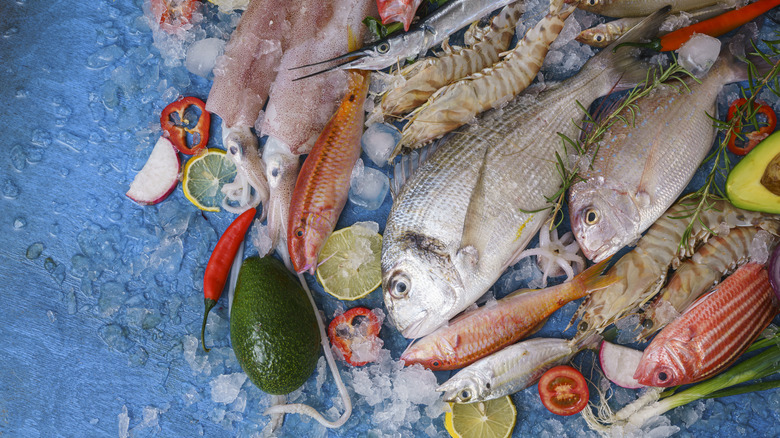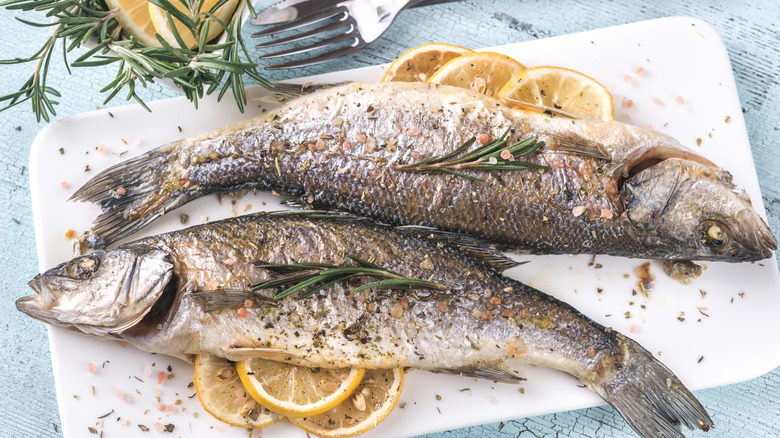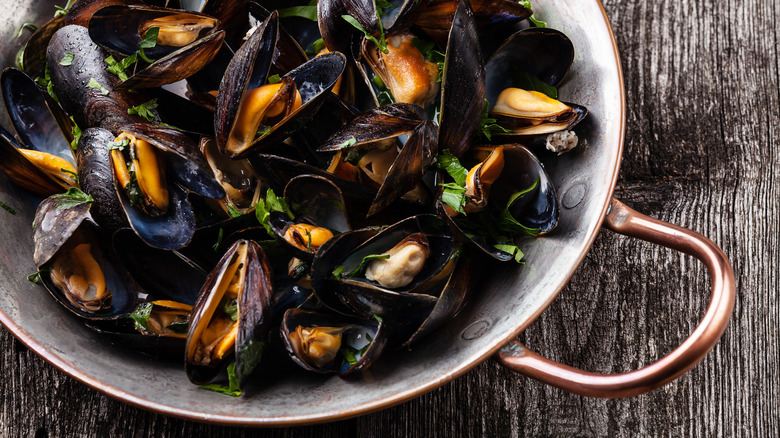The Biggest Mistakes You Make While Buying Seafood According To A Fishmonger
Seafood has a light freshness that no other protein can rival, making it ideal for refreshing summer meals. The key lies in the fact that fresh fish is typically caught within a few days of selling, although that depends on where you buy it from. If you want to make a show-stopping fish dinner, you want it to be as fresh as it can be, and of the highest quality. Unless you're an experienced fishmonger, discerning the quality of seafood can be tricky. Fortunately, we found a pro to give you the inside scoop.
Chowhound spoke to fishmonger Joe Gurrera to learn how a pro picks the best fish. Gurrera knows seafood like few others do. He started his career working in his family's New York City fish shop growing up. In 1983, he became the owner of Citarella, a New York-based fish shop that has grown into a group of markets and has now been in business for over a century. Gurrera has worked with fishermen in the Atlantic, Pacific, and Mediterranean, mastering a knowledge of fish from flounder to fluke and beyond. Citarella only sells fresh fish, which can be tricky to handle, but Gurrera has some tips for shoppers to avoid the most common mistakes.
Choosing fresh fish
The most important thing Joe Gurrera emphasized is to be selective with where you source your fish. A common mistake is to buy prepackaged fish at a grocery store, where it's tricky to determine the source and quality. "It's very important to buy your seafood from a reputable and experienced fishmonger," Gurrera said. "These experts will get their product from the best sources and treat the fish carefully to maintain quality."
The best fishmongers work closely with the fishermen themselves, ideally sourcing fish from local waters to ensure they are as fresh as possible when they arrive in the shop. They should also be knowledgeable about which fish are abundant at which times of year, and it's always a good idea to ask them what is in season at the moment.
You can also use your own senses to test the quality of fish. In terms of looks, Gurrera explained, "the skin should be bright and shiny, and its spots, lines, and markings should be sharp". He likens the look of a good fresh fish to an HD image, clean and bright. Don't neglect touch either. "A fresh fish should be firm," said Gurrera, and he warns against buying any seafood with a strong fishy odor.
Getting the best shellfish
Shellfish are a bit more tricky to deal with than other fish. Shellfish should either be purchased alive or frozen. Don't buy fresh raw shrimp or other shellfish because even if they were caught recently, they can spoil incredibly fast. The same goes for other crustaceans like lobster. According to Joe Gurrera, "lobsters should be moving when you buy them". It's also best to cook them on the same day you buy them for maximum freshness. If, for some reason, you can't eat the lobster same day you buy it, Gurrera suggests it out of its packaging and refrigerating overnight in a bowl covered with a damp towel.
Mollusks are a similar case. "Clams, oysters, mussels, etcetera should be alive when you buy them," said Gurrera. You can check to make sure the mollusk is alive by tapping the shell. If the shell shuts tight, you know they're good. Like lobster, they can be stored in a bowl in a refrigerator overnight if needed. Ideally though, you should eat fish and shellfish on the day of purchase, and don't worry, Gurrera has tips for cooking fish too.


